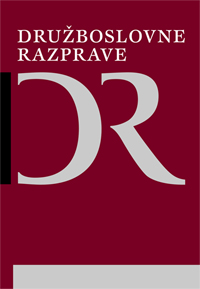Arhitekture bolečine – izkustvo bolečine in uveljavljanje telesu neprilagojenih družbenoprostorskih estetskih praks
Architectures of pain – the experience of pain and enforcement of bodily non-adapted socio-spatial aesthetic practices
Author(s): Matjaž UršičSubject(s): Social Sciences
Published by: Slovensko sociološko društvo (in FDV)
Keywords: neurasthenia; Charles Le Corbusier; decontextualised urbanism/architecture; individualisation of the residential environment
Summary/Abstract: The article questions the ways in which the body and everyday needs of individuals become integrated into different models of socio-spatial aesthetical practices. The problematic is analysed through various cases drawn from architecture and urban planning where the aesthetic structure i.e. artistic expression predominates over the needs of individuals. In such cases the designer follows the idea: ‘If the body does not correspond to the needs of architectural design, so much worse for the body’. The problem of so-called body unfitted architecture can be recognised in inappropriate residential conditions where the enforcement of specific aesthetic requirements in space can represent a huge physical and emotional stress on the residents. Such spaces often give rise to extreme and unusual life situations that require special adaptation procedures from the individuals and may provoke psychophysical changes that are reflected in experiences of pain. The article also presents the possible resistance strategies of individuals against attempts to decontextualise or standardise their residential experiences. One of the many characteristic examples of individual resistance against one-dimensional spatio-aesthetic practices is represented in individualisation i.e. the personalisation of body unfitted architecture. The personalisation of body unfitted architecture requires the transformation and alteration of the residential environment according to individual needs, even though this leads to the partial destruction of aesthetically unique architectural structures.
Journal: Družboslovne razprave
- Issue Year: 24/2008
- Issue No: 057
- Page Range: 59-77
- Page Count: 19
- Language: Slovenian

